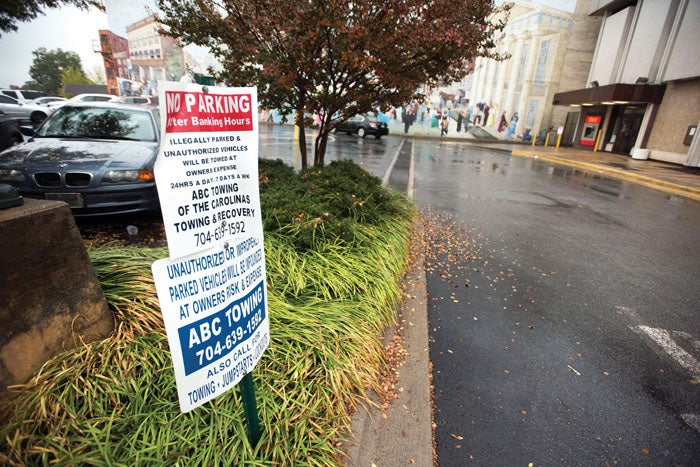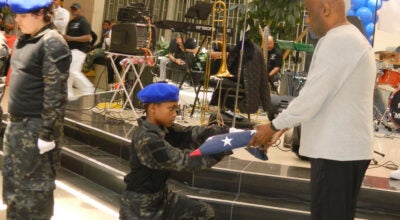Downtown stakeholders take issue with city’s parking study
Published 12:00 am Thursday, October 31, 2019

- Signs warn that vehicles may be towed in the parking lot behind the former Wells Fargo Bank on East Fisher Street. Jon C. Lakey/Salisbury Post
SALISBURY — The city is currently midway through a downtown Salisbury parking study to determine the next action they should take, if any, to address potential parking problems.
At the Oct. 16 City Council meeting, the Council received a report that during peak hours, 9-11 a.m., the overall utilization rate was 45% for parking.
Some downtown stakeholders scoffed at the time, as 9 a.m. is before many of the downtown businesses are open. The downtown areas sees an increase around lunch and dinner time.
VHB Engineering representatives Wayne Robinson told the council the city does not have a parking problem based on the number, but the issue was people want to park when and where they want. It is a perceived parking problem, Robinson said.
Megan Cauble works at a downtown restaurant and says she has begun to prefer night shifts, since parking is not a task for her and her co-workers. In the past year, she says, the parking problem has gotten worse, being asked to move her car from a merchants parking lot and not knowing where to park her car for the duration of her shift.
Cauble said it’s becoming a liability for her to go to work and fears being towed and not able to retrieve her car to pick up her daughter.
Restaurant customers often ask her if they will get towed. Because of the two-hour limit in some spots they often don’t stay in town, Cauble said.
“It’s not a problem for people making the decisions,” Cauble said.
Dennis Lunsford, owner of Kitchen Store, said parking is the No. 1 concern of customers. Lunsford said he often sees a group of women come into town to shop, grab lunch and continue shopping, but they can’t do that in the two hour allotment.
“We’re running people away when we should be welcoming them with open arms, not putting a time limit on it,” Lunsford said.
Lunsford parks in front of his store. He used to park in a lot off of Church Street until he began getting tickets and warnings about towing.
Ideally, all the customers should be parking on Main Street and the merchants should park in the back, he said.
As more buildings are renovated, Lunsford sees the lack of parking to only increase.
Lunsford also voiced concerns about the parking study that looked at one day. He said it doesn’t show any pattern.
Michael Young, a downtown resident and developer who renovated the O.O. Rufty building, said the peak hours cited “missed the mark.” At noon on Wednesday through Saturday, finding a parking space is challenging.
Young said the study also should have looked at pedestrian activity and not traffic activity. As a pedestrian, Young said, he feels unsafe crossing the streets with the amount of traffic on Innes Street and cars traveling above the speed limit. Taking a foot off the sidewalk to cross, Young said he says a little prayer.
“If we want to create an atmosphere that promotes people walking further to get to their destination, we have to make it more pedestrian friendly,” he said.
Young said providing a place for people to park longer will help people stay longer. He said the alleyways should also be fixed and cleaned because pedestrians would rather not walk through an alley that has failed to be maintained.
Like Lunsford, Young says a one-day study is not reliable.
VHB Engineering will return to downtown Salisbury on Nov. 16 for weekend parking utilization study. The data shared will be useful in establishing a parking program and infrastructure to enhance the downtown’s economic vitality and meet the needs of Salisbury’s citizens and downtown stakeholders, according to City Engineer Wendy Brindle.
It will also be used to accompany the Main Street Corridor plan and to update the current Downtown Master Plan.
The parking study cost the city $59,000.



